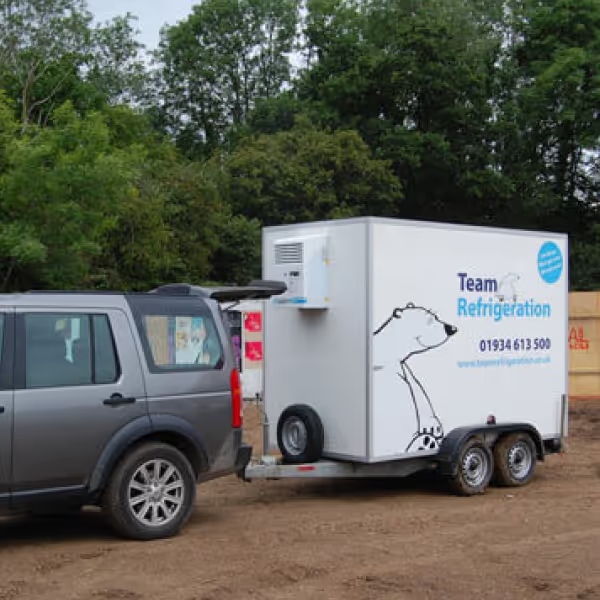Experience Our Simple Rental Process Today
At Team Refrigeration, we prioritise your convenience. Our hassle-free rental process ensures you get the cold storage you need, without any complications.
















How to Rent a Refrigeration Unit
Renting a refrigeration unit is a straightforward process. Follow these steps to ensure a smooth experience.

Step 1
Perhaps you already know the size and type of unit you need. If not, our expert team are here to help you decide.
We need to think about how much you need to store, temperature requirements, power availability and vehicle access.
Step 2
Reach out to our team to check availability. We'll make sure you get cold space where you need it, when you need it.
Step 3
Complete your rental agreement and make payment. Once confirmed, your unit will be reserved.
Step 4
We will confirm your rental and delivery details and the unit will be dispatched as agreed. Stay cool and await your delivery.
Step 5
We don't just deliver cold space, we deliver peace of mind. Any questions, just get in touch.






How it Works
Cold storage crisis? Follow these steps and we’ll take it from here.
Speak to a real person on 0333 567 0785, day or night. We’ll help you take immediate action and get things moving fast.
Our team dispatches your unit. It will arrive clean, reliable and ready to go. We have a 4-hour guarantee for emergency refrigeration.

We’ll recommend the ideal fridge or freezer trailer based on your stock, space, and urgency - no overthinking needed.
Coolness Delivered
Your unit will be delivered as promised. It will be set up to your specification and we'll make sure you are 100% happy before we leave site.
With your stock safe in our unit, your business keeps moving. Never lose stock, sales or sleep.
We’ll recommend the ideal fridge or freezer trailer based on your stock, space, and urgency - no overthinking needed.
Coolness Delivered
Your unit will be delivered as promised. It will be set up to your specification and we'll make sure you are 100% happy before we leave site.
With your stock safe in our unit, your business keeps moving. Never lose stock, sales or sleep.



Seamless Delivery and Setup for Your Refrigeration Needs
At Team Refrigeration, we understand that your time is valuable. You want a quick, straightforward solution you can trust. Our expert team ensures a smooth delivery and setup process tailored to your requirements.
Delivery Process
We coordinate delivery times that fit your schedule for maximum efficiency.
Setup Assistance
Our team provides hands-on setup to ensure everything operates perfectly.




Get Your Custom Quote Today
Reach out now to discuss your refrigeration needs and receive a personalised quote.





Questions? Fire away.
How do I rent?
Either complete the online form or get in touch now on 0333 567 0785. We're here to help!
What are the costs?
Rental costs vary based on the type and duration of the rental. We offer competitive pricing and flexible terms to meet your needs. Contact us for a personalised quote.
How long can I rent?
You can rent our units for as short as a day or for extended periods, depending on your requirements. We accommodate both short-term and long-term rentals. Just let us know your needs!
What is included?
Our rentals include the unit itself, necessary equipment, and support during your rental period. We ensure that everything is in optimal condition for your use. Additional services such as shelving or remote monitoring may be available upon request.
Do you offer delivery?
Yes, we provide delivery services for our rental units. Our team will coordinate the delivery time and location that works best for you. Just specify your preferences when booking.
